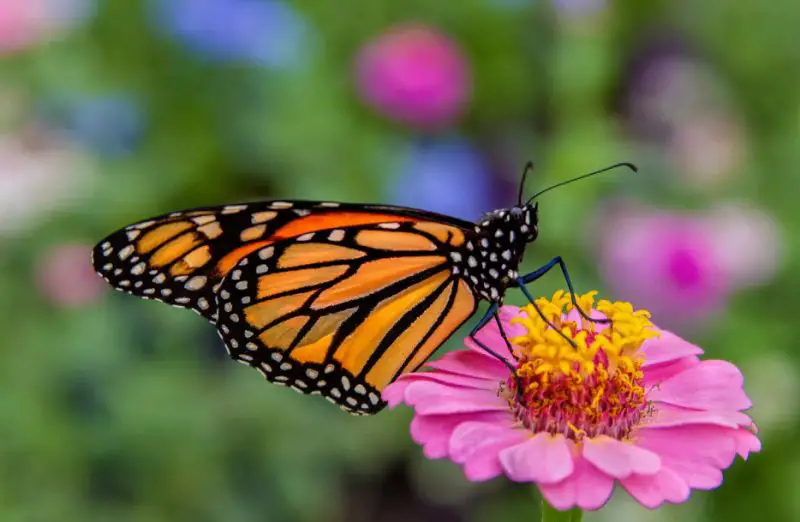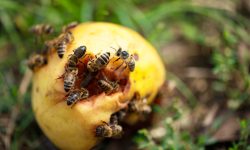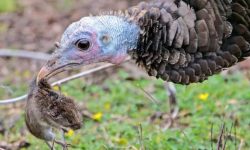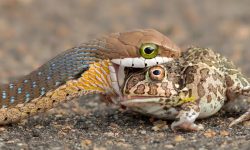Butterflies are among the most beautiful and fascinating creatures on Earth. With their colorful wings and delicate flight, they bring life to gardens and fields around the world. But beyond their beauty, these insects play a vital ecological role as pollinators — helping flowers reproduce and ecosystems thrive.
Have you ever wondered what keeps these gentle fliers energized and healthy? In other words, what do butterflies eat?
The answer is more interesting than most people think. While butterflies are often associated with sipping nectar, they actually feed on a variety of foods — from flower nectar and fruit juices to tree sap and even minerals from mud. Their diet depends on their environment, species, and stage of life.
In this detailed guide, we’ll explore 20 foods butterflies love the most, how they find them, and why these foods are crucial for their survival.
Understanding Butterfly Feeding Habits

How Butterflies Eat
Unlike many insects, butterflies can’t bite or chew. Instead, they use a proboscis — a long, straw-like tongue that curls up when not in use. When feeding, they uncoil it and use it to suck up liquids like nectar, fruit juice, or water.
This means butterflies depend entirely on liquid nutrition. Their food must be dissolved or naturally fluid, allowing them to absorb energy quickly.
Why Diet Matters for Butterflies
A butterfly’s diet provides the essential nutrients it needs to fly, reproduce, and maintain its brilliant colors. Sugary foods supply energy, while minerals and salts support muscle function and egg development. Without proper nourishment, even the most vibrant butterfly can weaken quickly.
20 Foods Butterflies Love the Most
1. Flower Nectar
Nectar is the primary food for most adult butterflies. It’s rich in natural sugars like sucrose, glucose, and fructose, which fuel their constant flight.
Butterflies are drawn to brightly colored flowers such as zinnias, coneflowers, lantanas, and milkweed. These blooms not only provide energy but also serve as gathering spots for multiple species.
The relationship between flowers and butterflies is mutually beneficial — as butterflies drink nectar, they also transfer pollen, aiding in plant reproduction.
2. Rotting Fruit
Overripe or fermenting fruit is another butterfly favorite. Bananas, peaches, oranges, and mangoes release sweet, juicy liquids that are easy to drink through their proboscis.
Rotting fruit also contains trace minerals and amino acids not found in nectar. This makes it an important food source, especially when flowers are scarce.
In tropical forests, fruit-feeding butterflies like the blue morpho and owl butterfly rely heavily on fallen, fermenting fruit to survive.
3. Tree Sap
Tree sap is a hidden treasure for butterflies, providing sugars and minerals from plant tissues. Species like mourning cloak butterflies feed on sap from wounded trees or where woodpeckers have made holes.
Sap is available even in cooler months when flowers are limited, making it a year-round energy source.
Its sticky texture provides slow, sustained energy, allowing butterflies to remain active longer between feedings.
4. Pollen
Some butterfly species, particularly in the Heliconius genus, consume pollen in addition to nectar. This gives them a rare advantage — extra protein and amino acids that extend their lifespan and fertility.
Pollen feeding involves dissolving grains with saliva before sucking up the liquid mixture. It’s a slower process but provides long-lasting nutrition compared to sugary nectar.
This unique diet helps pollen-feeding butterflies live months longer than average nectar feeders.
5. Mud and Damp Soil (Mud-Puddling)
Butterflies often gather in groups on wet soil or puddles — a behavior known as mud-puddling. Here, they drink mineral-rich water that contains sodium, potassium, and other essential nutrients.
Male butterflies are particularly fond of this habit, as the minerals boost reproductive success. Later, they pass these nutrients to females during mating.
Mud-puddling is especially important in tropical and warm regions where mineral-rich puddles form after rain.
6. Animal Dung
Yes, as strange as it sounds, butterflies sometimes feed on animal dung. It may seem unpleasant, but dung contains essential salts, nitrogen, and amino acids that butterflies can’t get from nectar alone.
This behavior is common among species like the red admiral and painted lady butterfly. By absorbing these nutrients, they maintain strong wings and reproductive health.
Dung feeding also plays an ecological role by recycling waste nutrients back into the ecosystem.
7. Carrion (Dead Animals)
Another unexpected source of nutrition for butterflies is carrion — the decaying remains of animals. It provides proteins, salts, and nitrogen compounds crucial for survival.
Butterflies typically feed on fluid seeping from carcasses, using their proboscis to absorb it carefully.
While not a primary food source, carrion is a valuable backup during dry seasons when flowers and fruits are scarce.
8. Sap Flows from Tree Wounds
When trees are damaged, they release nutrient-rich sap that butterflies quickly find. This sap is thicker than nectar but offers a high-energy boost.
Butterflies like the mourning cloak or comma species are often seen feeding on sap in forests during early spring or late fall when flowers are not blooming.
This resourceful habit helps them survive in cooler or transitional climates.
9. Overripe Bananas
Bananas deserve a special mention because they are one of the most effective attractants for butterflies. As bananas ferment, they produce alcohols and sugars that butterflies love.
Many butterfly gardens intentionally place mashed or sliced bananas on feeding trays to attract different species. The fruit’s strong scent and soft texture make it an irresistible treat.
Bananas also provide trace minerals, helping butterflies maintain their vibrant coloration.
10. Water
Though not a food, clean water is essential for butterflies. They drink from puddles, dewdrops, or moist soil to stay hydrated and regulate body temperature.
Water also helps dilute the sugary content of nectar and other foods, preventing dehydration during long feeding sessions.
Butterfly gardens often include shallow water dishes or damp sand areas to keep them nourished.
11. Orange Slices
Fresh orange slices are another favorite for nectar-seeking butterflies. Their bright color attracts attention, and the juice provides quick, accessible sugars.
Gardeners often use oranges alongside bananas and watermelons to draw butterflies for observation or photography.
Oranges also contain small amounts of vitamin C and potassium, which help butterflies stay energized.
12. Pineapple
Butterflies are highly attracted to the strong aroma of ripe pineapples. The tropical fruit’s natural sugars and fermenting juices make it a delicious energy source.
In butterfly exhibits, pineapples are commonly placed on feeding tables because they attract a wide variety of species.
The juice helps keep butterflies hydrated while providing long-lasting sugar energy for flight.
13. Melons
Watermelons, cantaloupes, and honeydews are excellent sources of hydration and sugar for butterflies. Their high water content keeps butterflies cool during hot weather.
Sliced melon pieces left in shaded garden spots quickly attract local butterfly species. The fruit’s soft texture makes it easy for them to feed.
Melons are particularly useful in butterfly habitats where flower nectar is limited.
14. Apple and Pear Juice
When apples and pears begin to overripe, their juices become rich in simple sugars. Butterflies eagerly feed on the fermented liquid, especially in autumn.
Gardeners can create easy butterfly feeders using crushed apples mixed with water or fruit juice.
This homemade food source mimics the sweetness of natural nectar, attracting species like swallowtails and admirals.
15. Fermented Tree Sap
In forested areas, tree sap may ferment naturally, producing alcohol and sugar compounds. Butterflies find these irresistible and often cluster around oozing spots.
Fermented sap provides extra calories, particularly beneficial for butterflies preparing to migrate or overwinter.
This type of feeding is common among woodland butterflies that remain active outside typical flowering seasons.
16. Gatorade or Sugar Water (in Captivity)
For butterfly conservatories and home gardens, diluted sugar water or sports drinks like Gatorade can substitute for nectar.
This artificial nectar offers an easy, controlled way to feed captive or rehabilitating butterflies. The solution usually contains one part sugar to ten parts water.
However, it should be used responsibly and changed frequently to avoid fermentation.
17. Sap from Banana Peels
When banana peels start to break down, they release sticky sap filled with glucose and potassium. Butterflies are attracted to this natural sweetness.
Peels can be placed in garden corners or compost areas to invite butterflies naturally. The smell and texture mimic the decaying fruit they love in the wild.
This sustainable feeding method recycles kitchen waste into a natural butterfly attractant.
18. Tree Sap Mixed with Rainwater
After rain, sap diluted with water seeps from tree bark, creating a nutrient-rich puddle. Butterflies often gather to sip this mixture, combining hydration with minerals.
This feeding pattern is common in temperate forests where rainy conditions support tree growth and insect diversity.
It’s another example of how butterflies creatively use natural resources for nourishment.
19. Bird Droppings
Like mud and dung, bird droppings contain sodium and nitrogen compounds essential for butterfly health. Many tropical species, including swallowtails, feed on them.
While it may seem unusual, this behavior helps butterflies get rare nutrients that sugary nectar lacks.
Feeding on droppings often occurs near perching sites or forest trails frequented by birds.
20. Plant Sap and Secretions from Wounds
When stems or fruits are injured, they release sap and moisture that butterflies readily consume. These fluids are rich in sugar, minerals, and amino acids.
This opportunistic feeding ensures butterflies can survive even when flowers are not blooming.
It also demonstrates their adaptability — a key reason butterflies thrive in diverse environments.
The Importance of a Balanced Butterfly Diet
Energy and Flight
Butterflies burn tremendous energy while flying and searching for food. Their sugar-rich diet provides immediate fuel for these activities, while minerals and amino acids help maintain wing strength and reproduction.
Pollination and Ecosystem Health
Every time a butterfly lands on a flower to eat, it transfers pollen between plants. This natural process sustains forests, farms, and flower populations. Without butterflies, many plant species would struggle to reproduce.
Frequently Asked Questions (FAQs)
Do butterflies eat solid food?
No, butterflies can only drink liquids. Their proboscis is designed to suck up fluids like nectar, sap, and fruit juice — never solid foods.
What do caterpillars eat before becoming butterflies?
Caterpillars eat solid plant leaves, usually from specific host plants. After metamorphosis, adult butterflies switch to a liquid diet.
How do butterflies find food?
They use their antennae and feet to detect sweet scents and taste surfaces. Their feet contain taste sensors that help them locate suitable feeding spots.
Why do butterflies gather on mud or dung?
They do this to absorb minerals like sodium and nitrogen, essential for flight and reproduction. This behavior is called mud-puddling.
Can I feed butterflies in my garden?
Yes! Place overripe fruit (like bananas or oranges) or shallow dishes of sugar water in a sunny, sheltered spot to attract them safely.
Conclusion
Butterflies may appear fragile, but their diet reveals their adaptability and resilience. From flower nectar and fruit juices to minerals in mud or sap, they find nourishment in creative ways that keep them colorful and alive.
Their feeding habits not only sustain their own lives but also nurture the ecosystems they belong to. Every sip of nectar contributes to pollination, biodiversity, and the beauty of the natural world.
So next time you see a butterfly flutter by, remember — behind those delicate wings lies a world of survival, sweetness, and strength powered by nature’s most elegant diet.






